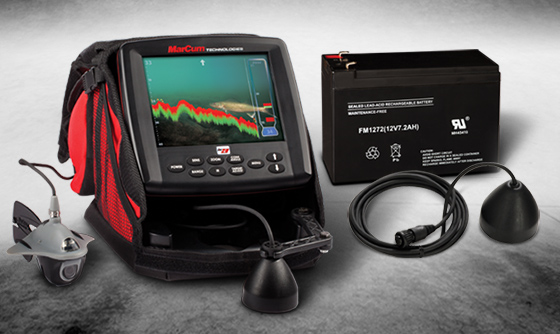
If you attacked the ice this winter, running and gunning with speed and agility, you likely kept a step ahead of the fish and have the fillets in the freezer to prove it. You also likely pushed your gear to its limits. So now’s the time to see how your electronics withstood your ice assault and order replacement parts for next season, if needed.
“If you fish fast and hard, your transducer often takes the biggest beating,” says Jon Marshall, MarCum® Brand Manager. “It might have seemed like a good time-saver at the time to knock open an iced-over hole with it, but that kind of use can result in decreased performance.”
Another common sight on the ice can lead to a transducer’s premature performance decline — dragging it across the ice from hole to hole on a too-long cord.
“Out of the box, MarCum transducers are ready to withstand normal wear and tear and deliver many years of reliable, efficient fish-finding,” Marshall says. “But failure to take the most common precautions can eventually degrade their ability to detect fainter signals. If your unit wasn’t performing at the end of the season as it did in early winter, it might be time for a new transducer.”
Replacement transducers are available online at www.marcumtech.com.
Knobs and Grommets
Now’s the time also to make sure your MarCum isn’t missing small parts like gimbal knobs, snow shields and transducer-cord grommets.
“If you find you lost something out on the ice this winter, order a replacement now, while it’s fresh on your mind,” Marshall says. “If you don’t, it could come back to haunt you at the start of next season.”
Replacement parts are available online at www.marcumtech.com.
Off-Season Battery Care
Charge your MarCum’s battery every 30 to 60 days over the off-season to ensure optimal performance next winter.
“No matter the brand, any lead-acid battery is going to lose some charge over time,” Marshall explains. “And even the best brands require regular re-charging.”
Without regular re-charging, a battery will eventually refuse to take a charge. Even worse, it could appear to take a charge, only to run down quickly or fail outright on the ice, leaving you without your underwater eyes.
After re-charging your battery to full charge, disconnect it from your sonar unit until you re-charge it again. This prevents against a stray current draw that could slowly drain the battery’s charge.